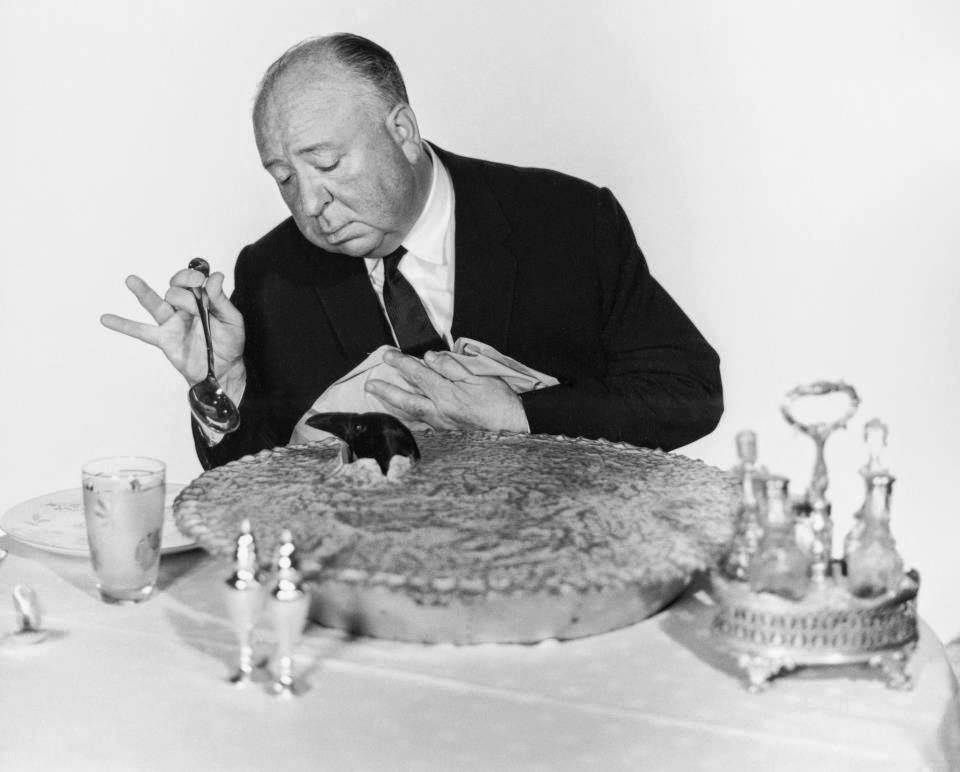A Mad World
It
can feel like beating a dead horse to say over and over again “they
don't make them like they used to” when it comes to talking about
classic films. The phrase itself automatically puts an aged sheen
over a movie, a disservice, when sometimes what you want to do is get
someone to realize that an older film can be just as relevant as
whatever new Michael Bay film in which he destroys a beloved
childhood property is (my bet is on Power Rangers as the next one).
However, there are some times when that phrase is quite apt to
describe certain movies, and nothing fits that moniker better than
1963's It's a Mad,
Mad, Mad, Mad World.
By
the early 1960s, director Stanley Kramer had a glowing reputation as
the moral voice of Hollywood. Kramer was best known for his big
dramatic, socially conscious films, such as Inherit
The Wind
and Judgement at
Nuremberg. Wanting
to show that he had more to offer than just heavy films, Kramer
decided to make what he called “The comedy to end all comedies.”
Kramer didn't quite hit that mark, but he did come quite close and
made a remarkable movie, Mad
World
simply has an overwhelming sense to it, packed to the gills with
anyone who was anyone in comedy of the era.
The
main cast of Mad
World
is impressive in its own right: Milton Berle, Sid Ceasar, Edie Adams,
Ethel Merman, Mickey Rooney, Buddy Hackett, Phil Silvers, and the
force of nature that was Jonathan Winters. Topping of all that off is
the top billed Spencer Tracy, and bringing up the rear Jimmy Durante.
If that's not enough the film is loaded full of cameos, it's the only
film where you can see both Don Knotts and The Three Stooges
together. But that crazy sprawling cast is only part of what makes
Mad World
so remarkable.
For one thing, the film is quite possibly the only three hour long
comedy that's ever worked. It's an epic, the kind of sprawling film
presentation that doesn't exist anymore. A film with an overture, an
intermission, exit music, and even radio cues that were played during
the intermission in the lobby and bathroom that continued the story.
The story revolves around a group of strangers who stop alongside the
highway in the California desert, after witnessing a car flying off
the side of the cliff-side road. Found near the wreckage is a dying
gangster, who tells the group that $350,000 is buried in a town not
too far away, “under a big W.” With that, the chase is on.
If
the cast and frantic chase plot, not to mention running time, of Mad
World
wasn't overwhelming enough, the film was shot on 65mm film and
released as a film having been made in “Cinerama.” Cinerama was
one of those early widescreen processes, which used three cameras
ergo three movie projectors working simultaneously to fill an
impossibly large curved wide, WIDE screen. Mad
World was
the first film made in the single strip of film Cinerama process.
Google the Cinerama Dome sometime, it's a historic theater in
Hollywood that was built for the film's premier—an “IMAX” of
the era, if you will.
The
film opened with a total running time of 210 minutes, but shortly
after that the film was cut down into a shorter general release
version that Stanley Kramer approved. The missing material was, as
was usual at the time, junked. As the beloved film's reputation grew,
the rabid fan base began a search to find an intact, full blown, 210
Mad World.
To date, most of the film has been recovered, some of it taken from
70mm release print trims, that were badly warped, faded, and on the
verge of deterioration. A recent five disc UBER collectors edition
from those Cinema Candy merchants The Criterion Collection presents
the new film in a wonderful restoration.
Viewers
have a chance to see the film in the general release version, or the
new extended 197 minute cut, which is as intact as the film is ever
as likely to be. It's truly a definitive home video document of one
of the most unique films ever created. If you've never seen the film,
start with the general release version that runs 162 minutes. In
truth, it's the better of the two cuts, the pacing is quicker,
redundant scenes are out, and some plot elements are not given away
as quickly. Mad
World paid
off for Kramer, as the film was a massive critical and box office
hit. Leaving us with a most beloved film, and a document of almost
every funny person alive of that era.
“They
don't make them like they used to” is true of a film like It's
A Mad, Mad, Mad, Mad World,
with it's sprawling cast, running time, and huge screen presence, no
studio would dare take a stab at making anything as lavish today.
It's a one of a kind film, and one that is now ripe for discovery by
a new generation.


Comments
Post a Comment